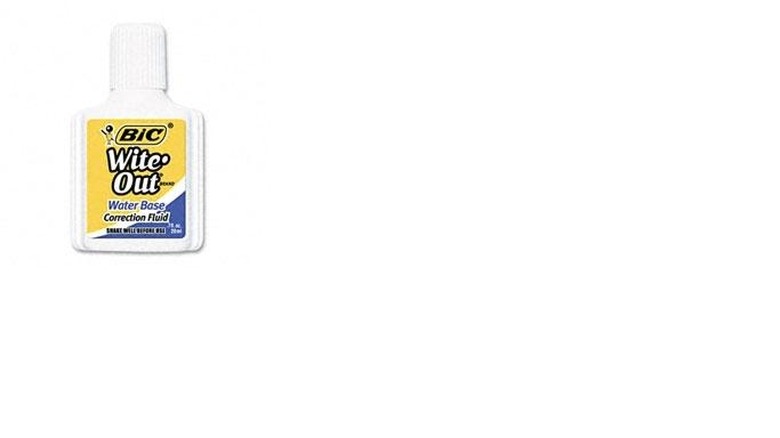What Chemicals Are In Correction Fluid?
The Chemicals
The Chemicals
Correction fluid is made using an assortment of chemicals to create a fluid that spreads across normal typing or writing errors. The first chemical is titanium dioxide, which has a color index of pigment white, the standard color for correction fluid. Next are the solvent naphtha, petroleum and light aliphatic, which mix with the initial chemical. Resin, mineral spirits, colorants, fragrance, and dispersant also combine with the rest of the chemicals to create the opaque, white substance.
Trichloroethane, a thinning agent, is no longer used due to its toxicity under Proposition 65.
History
History
Betty Nesmith Graham invented correction fluid in 1951 as a type of paint to cover mistakes. She sold her product to the Gillette Corporation in 1979, and it became Liquid Paper. During the 1980s, Liquid Paper went under scrutiny for abuse due to recreational sniffing of the product as well as the use of thinners like trichloroethane. Many considered this particular thinner to be carcinogenic since numerous studies linked it to deaths. Years after the controversy, the makers of Liquid Paper, as well as those of other correction fluids, removed the chemical and changed the formula. As of today, no toxic solvents remain in the production of correction fluids.
Thinners and Abuses
Thinners and Abuses
Organic solvents in correction fluid solidify over time with exposure to the air. Thinners like toluene or trichloroethane help to return the correction fluid to its liquid form. Since these types of thinners are known to be carcinogenic and harmful to the ozone layer, bromopropane now replaces these compounds. Water-soluble brands are safer, but take longer to dry and soak through certain types of inks. Abuse of the product due to inhalation requires manufacturers of correction fluids to use an unpleasant smell to deter abusers.
References
Cite This Article
MLA
Contributor, . "What Chemicals Are In Correction Fluid?" sciencing.com, https://www.sciencing.com/chemicals-correction-fluid-5241276/. 24 April 2017.
APA
Contributor, . (2017, April 24). What Chemicals Are In Correction Fluid?. sciencing.com. Retrieved from https://www.sciencing.com/chemicals-correction-fluid-5241276/
Chicago
Contributor, . What Chemicals Are In Correction Fluid? last modified August 30, 2022. https://www.sciencing.com/chemicals-correction-fluid-5241276/
